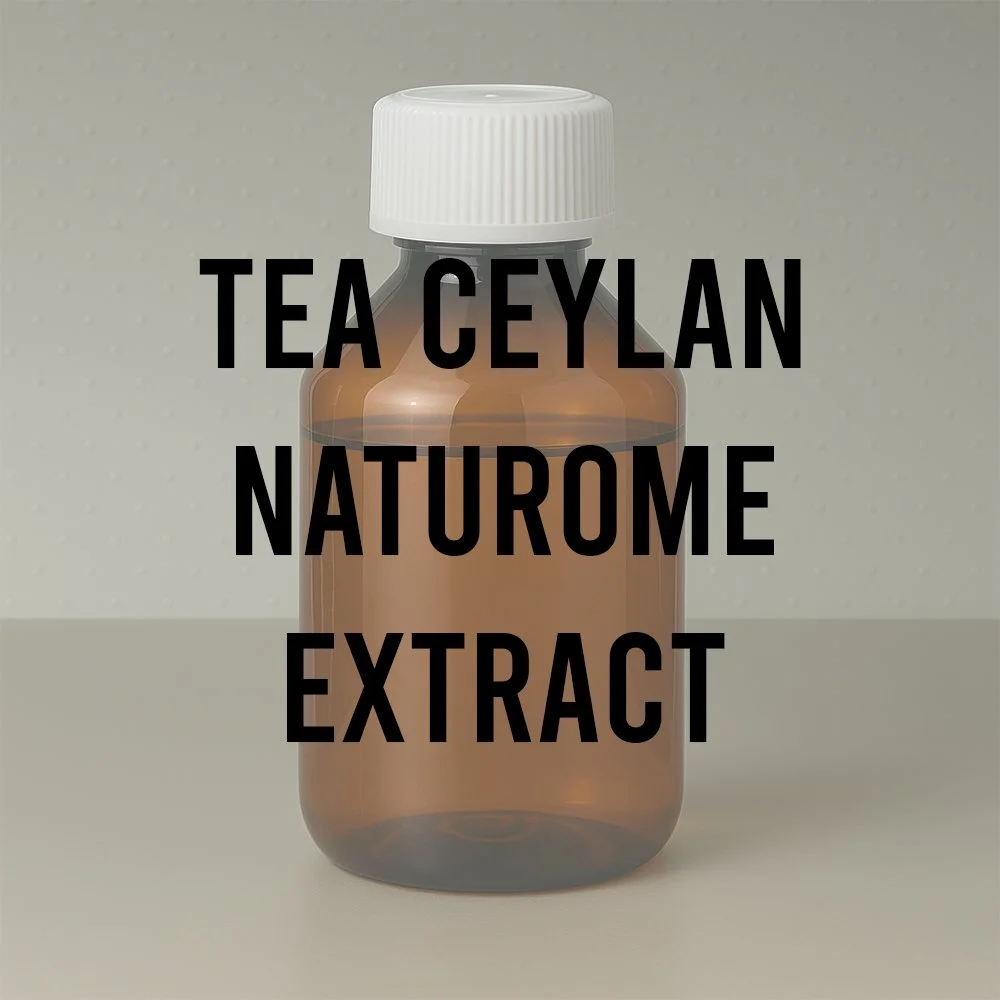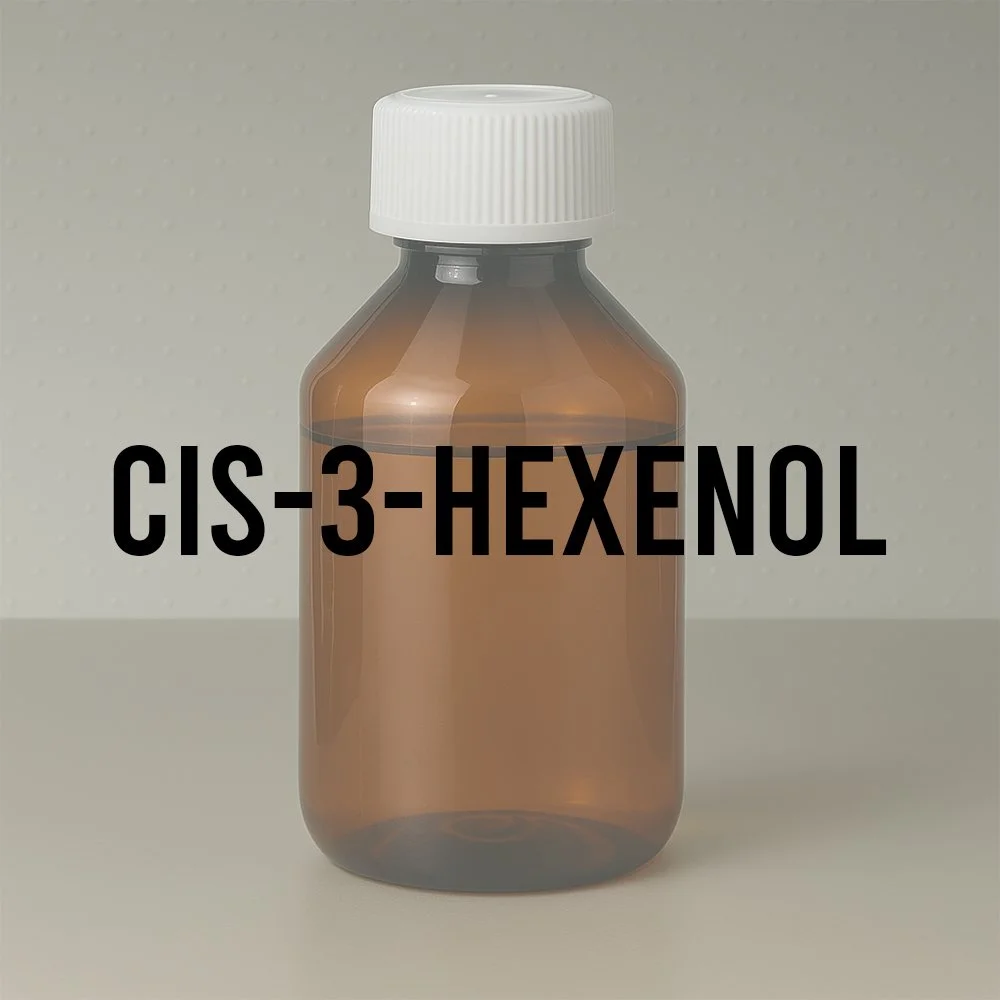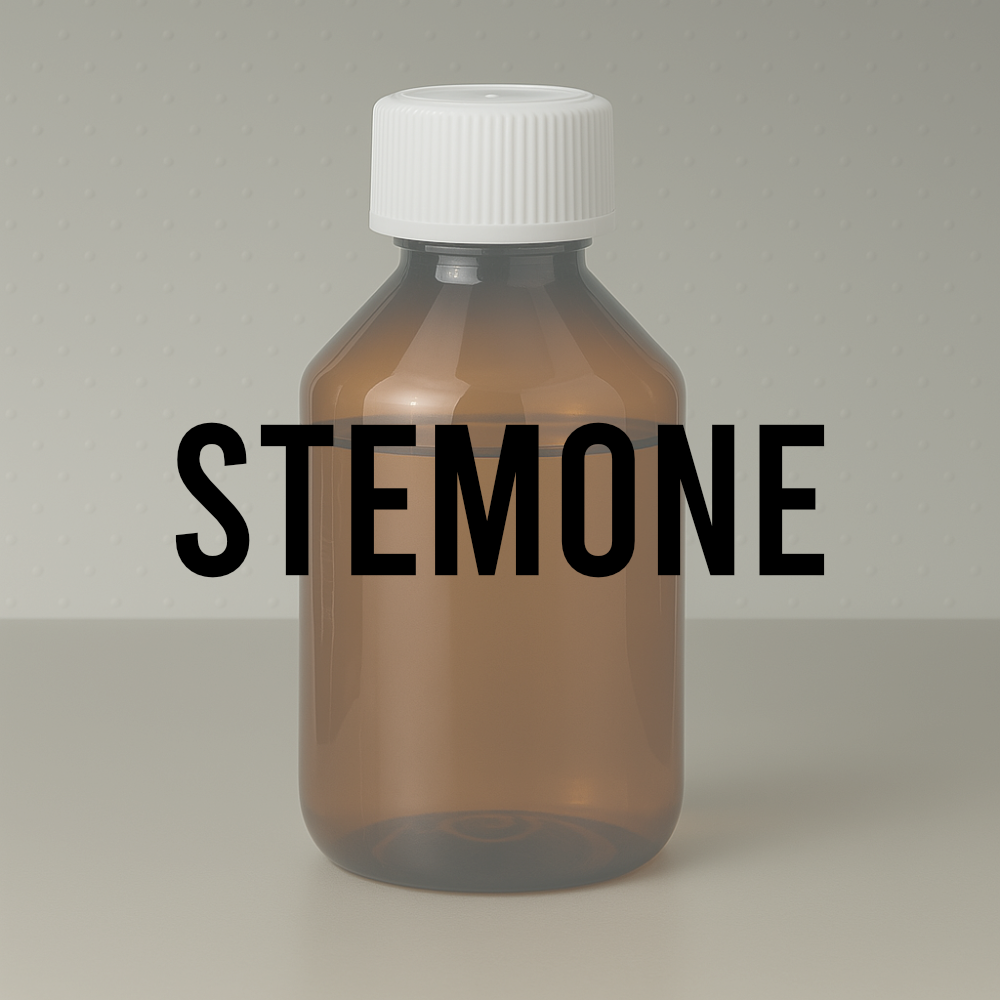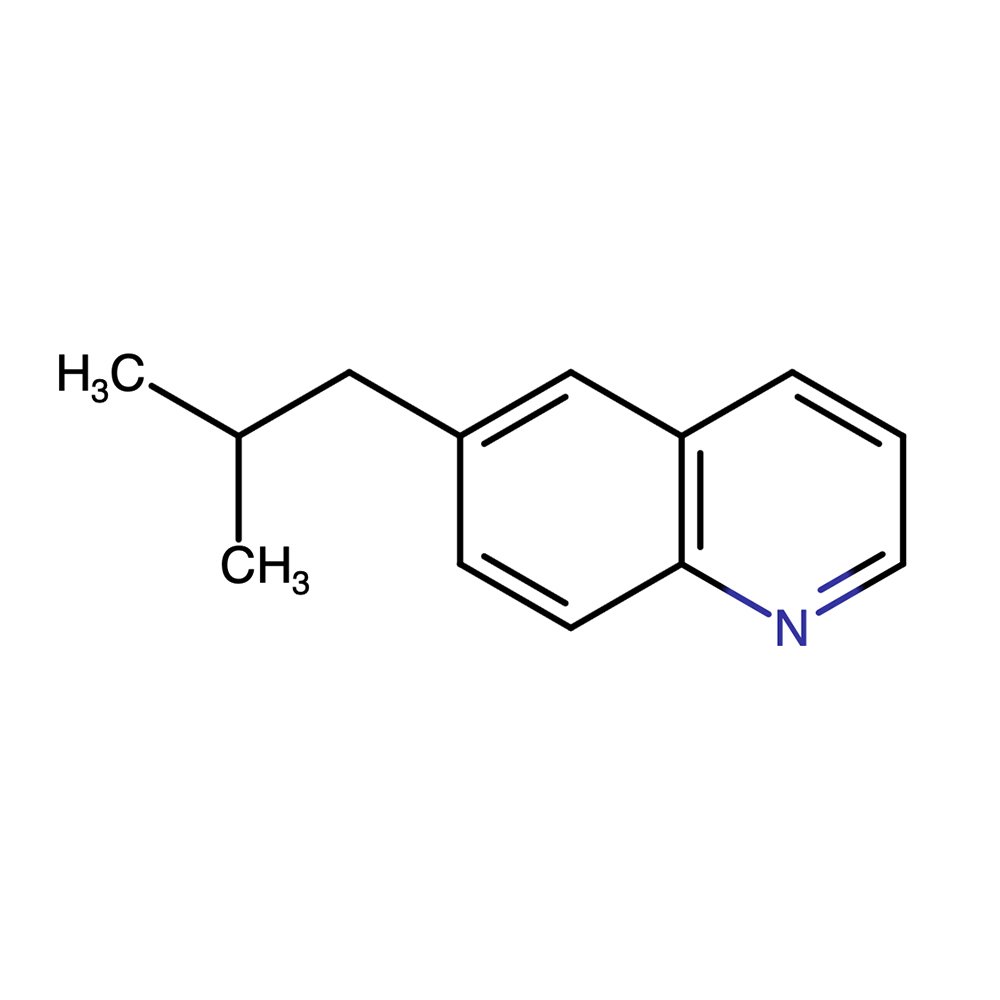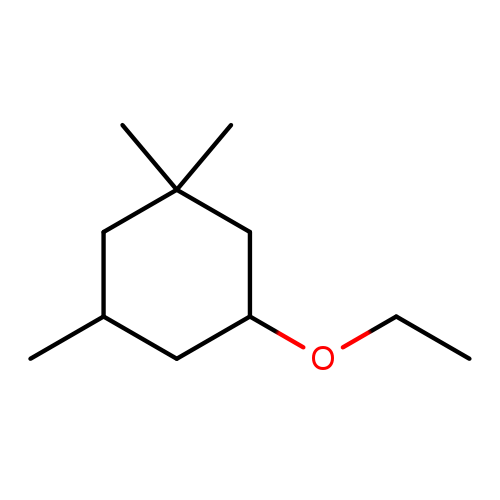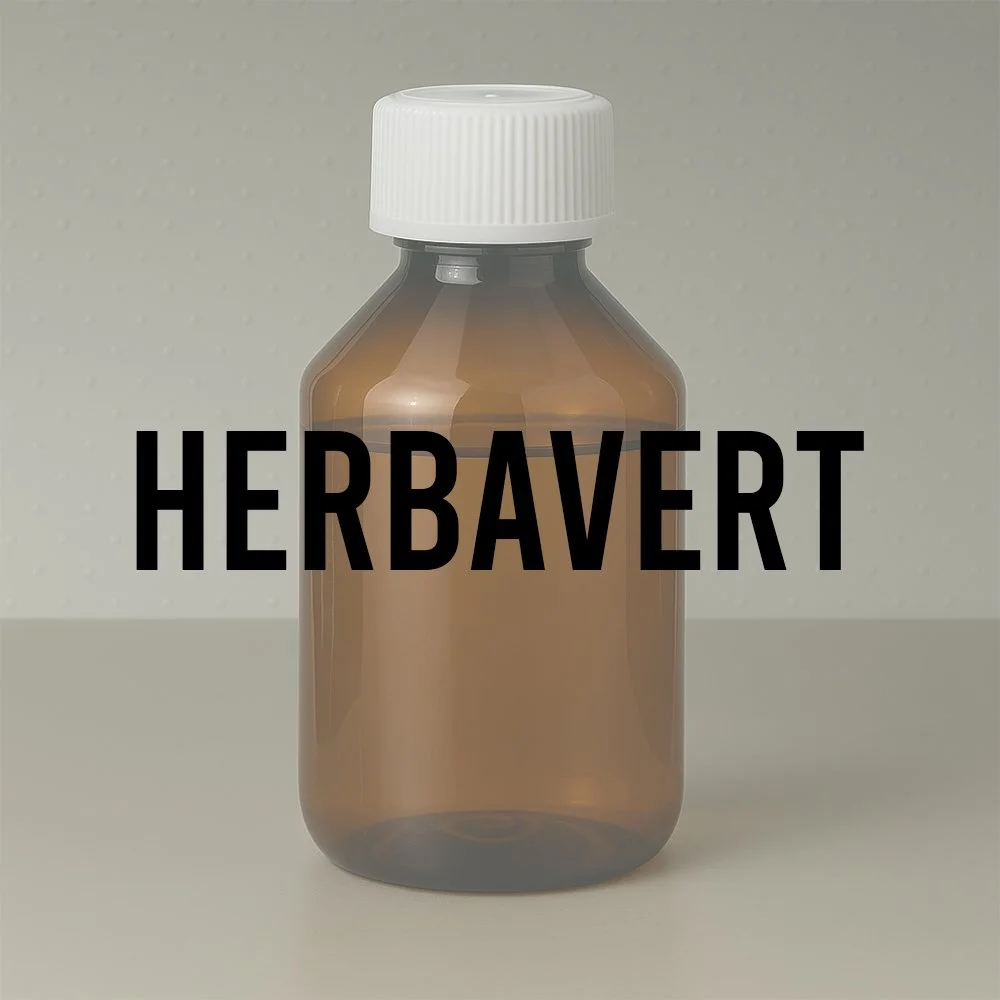Technical Ingredient Overview
🏭 Manufacturer — Firmenich (now dsm-firmenich)
🔎 Chemical Name — Spiro[1,4-methanonaphthalene-2(1H),2'-oxirane], 3,4,4a,5,8,8a-hexahydro-3',7-dimethyl-
🧪 Synonyms — Rhubarb oxirane; Rhubofix®
🧬 Chemical Formula — C₁₄H₂₀O
📂 CAS Number — 41816-03-9
📘 FEMA Number — Not applicable (perfumery use only)
⚖️ Molecular Weight — 204.31 g/mol
📝 Odor Type — Woody, green-floral, rhubarb
📈 Odor Strength — Medium to strong
👃🏼 Odor Profile — Versatile woody note with vetiver facets, prominent floral-green rhubarb effect, grapefruit undertone, spicy-fresh character
⚗️ Uses — Fine fragrance (woody accords, vetiver reconstructions, green-rhubarb effects, citrus-aromatic compositions, spicy rose nuances)
🧴 Appearance — Colorless to pale yellow liquid
What is Rhubofix®?
Rhubofix® is a proprietary captive ingredient developed by Firmenich (now part of dsm-firmenich), characterized by its complex spirocyclic molecular structure containing an oxirane (epoxide) ring fused to a methylated naphthalene system. This synthetic aromachemical belongs to the woody-green olfactive family and represents a sophisticated example of molecular architecture designed to deliver multifaceted olfactory effects (dsm-firmenich, 2024).
The molecule's distinctive spiro junction creates a three-dimensional structure that contributes to its unique odor profile, combining woody-vetiver characteristics with fresh green-rhubarb nuances and citrus-grapefruit facets. As a captive ingredient, Rhubofix® is exclusively available to Firmenich's perfumers and clients, representing the company's investment in innovative aromachemical research (Sell, 2006).
The name "Rhubofix" suggests its primary application as a fixative component that imparts rhubarb-like characteristics while providing structural support to fragrance compositions through its woody base notes.
Historical Background
Discovery and Development
Rhubofix® emerged from Firmenich's extensive woody materials research program, which has been instrumental in developing synthetic alternatives and enhancements to natural woody ingredients since the 1970s. The dsm-firmenich woody family originated in 1972 with the discovery of the captive ingredient Polywood® and continued in 1986 with the launch of Norlimbanol®, two groundbreaking molecules that established standards for powerful, long-lasting woody and ambery notes (dsm-firmenich, 2024).
While the specific date of Rhubofix®'s synthesis and commercial introduction is proprietary information not publicly disclosed by Firmenich, the molecule represents the company's ongoing commitment to developing sustainable and high-performance alternatives to traditional woody ingredients like patchouli and sandalwood.
Development Context
The development of Rhubofix® aligns with several key trends in modern perfumery chemistry:
Multifunctional molecules: Combining woody, green, and fruity-floral characteristics in a single structure
Sustainable alternatives: Providing alternatives to natural materials with supply or sustainability concerns
Captive ingredient strategy: Creating proprietary molecules that differentiate fragrance houses' creative capabilities
Green chemistry principles: Following sustainable synthesis pathways when possible (dsm-firmenich, 2024)
The molecule's complex architecture suggests sophisticated synthetic methodology, likely involving multi-step organic synthesis to construct the spirocyclic system and introduce the oxirane functionality.
Olfactory profile
Rhubofix® presents a sophisticated multi-faceted odor profile that distinguishes it from simpler aromachemicals:
Primary characteristics:
Woody backbone: Evokes vetiver facets with earthy, rooty undertones
Green-rhubarb effect: Prominent floral-green character reminiscent of fresh rhubarb stalks
Grapefruit undertone: Citrus freshness with slightly bitter hesperidic notes
Spicy-floral nuances: Can contribute to spicy rose effects in certain contexts
Secondary characteristics:
Fresh, zesty quality providing "verticality" in compositions
Aromatic-fresh notes that enhance citrus accords
Slight earthy-vegetal depth characteristic of vetiver-type materials
Clean, modern woody character distinct from traditional sandalwood or cedar notes
Intensity
Medium to strong intensity with excellent substantivity. The molecule demonstrates good tenacity on blotter and skin, contributing both to top-heart transition and base notes depending on concentration and context.
Tenacity
Good to excellent longevity. As a woody material with moderate molecular weight (204.31 g/mol), Rhubofix® exhibits persistence comparable to other synthetic woody ingredients. The spirocyclic structure and relatively lipophilic character contribute to its staying power in fragrance compositions.
Volatility
Semi-volatile to base note
The molecular weight and structural complexity position Rhubofix® primarily in the heart-to-base note range:
Top notes: Fresh grapefruit and green-rhubarb effects perceptible in opening
Heart notes: Spicy-floral and aromatic-fresh characteristics develop
Base notes: Woody-vetiver facets provide lasting foundation
The molecule's multi-dimensional evaporation profile contributes to its versatility in creating dynamic fragrance evolution.
Fixative Role
Rhubofix® functions as a moderate fixative within woody-green compositions. While not as tenacious as amber or musk materials, its woody character and molecular structure provide:
Substantive support for volatile green and citrus notes
Structural foundation for rhubarb and vegetable accords
Bridging effects between fresh top notes and deeper base materials
Enhancement of overall composition longevity through synergistic effects
Applications in Fine Fragrance
Primary Functions
Rhubofix® serves multiple compositional roles, making it a valuable tool in modern perfumery:
1. Green-Rhubarb Accords The ingredient's namesake application involves creating naturalistic rhubarb effects that are difficult to achieve with natural extracts alone. Rhubarb, while increasingly popular in perfumery, lacks a commercially viable essential oil or absolute, making synthetic approaches essential.
2. Vetiver Reconstructions and Enhancements The vetiver facets in Rhubofix® allow perfumers to:
Reinforce natural vetiver oils
Create vetiver-type effects without relying solely on natural materials
Add fresh, grapefruit-like nuances to traditional earthy vetiver profiles
Provide cost-effective vetiver impressions in functional fragrance applications
3. Woody Base Note Construction As part of the Firmenich woody family, Rhubofix® contributes to:
Modern woody bases with fresh, clean character
Alternatives to traditional sandalwood and patchouli
Transparent woody backgrounds that don't overwhelm floral or fruity notes
4. Citrus-Aromatic Enhancement The grapefruit undertone makes Rhubofix® particularly effective in:
Citrus colognes and eau de toilette formulations
Fresh aromatic fougère structures
Masculine and unisex fragrance concepts
Sporty, energetic fragrance profiles
5. Spicy-Rose Nuances In specific compositional contexts, Rhubofix® can contribute to:
Modern rose interpretations with green-spicy facets
Pink pepper and rose combinations
Geranium-rose accords with added depth
Typical Accords and Combinations
Synergistic pairings include:
With citrus materials: Grapefruit oil, bergamot, yuzu for enhanced freshness
With green notes: Galbanum, violet leaf, fig for vegetable-green effects
With woody materials: Cedarwood derivatives, Iso E Super, Javanol for complex bases
With spices: Pink pepper, cardamom, ginger for aromatic-fresh effects
With florals: Geranium, rose, hedione for green-floral bouquets
Compositional contexts:
Vetiver fragrances (supporting and modernizing natural vetiver)
Green-aromatic masculines
Fresh woody unisex fragrances
Rhubarb-focused compositions
Citrus-woody colognes
Modern fougères
Performance in Different Fragrance Types
Eau de Cologne/Eau de Toilette (5-15% concentration):
Contributes lasting woody-fresh character
Enhances natural vetiver and citrus notes
Provides cost-effective substantivity
Eau de Parfum (15-20% concentration):
Develops full olfactory complexity
Balances top-note freshness with base-note depth
Creates dynamic evolution from fresh to woody
Perfume Extract (>20% concentration):
Reveals nuanced woody-green character
Demonstrates excellent tenacity
Integrates seamlessly into complex bases
Performance in Formula
Behavior in Blends
Solubility and compatibility: Rhubofix® demonstrates excellent solubility in:
Ethanol and perfumer's alcohol (excellent)
Dipropylene glycol (DPG) and diethyl phthalate (DEP) (excellent)
Light carrier oils and fractionated coconut oil (good)
Concentration guidelines:
Fine fragrance: 0.5% - 5.0% (typical use levels)
Functional fragrance: 0.2% - 2.0% (cost considerations)
Maximum impact: 3.0% - 5.0% (for pronounced rhubarb-woody effects)
Diffusion Characteristics
Rhubofix® exhibits moderate diffusion appropriate for its semi-volatile profile:
Initial green-citrus notes diffuse relatively quickly
Woody-vetiver character emerges gradually in heart phase
Base notes demonstrate good radiance without overwhelming projection
The molecule's balanced volatility prevents both premature fade-out and excessive tenacity that might create heaviness.
Impact on Overall Composition
Structural contributions:
Verticality: Provides lift and freshness to potentially heavy woody bases
Transparency: Creates clean woody effects without opacity
Bridging: Connects volatile top notes to substantive base materials
Modernity: Imparts contemporary character to traditional woody themes
Modulation effects:
Softens harsh green notes (galbanum, violet leaf)
Freshens earthy vetiver and patchouli
Adds complexity to linear woody bases
Provides naturalistic rhubarb character to fruity-green accords
Fixative Strength and Properties
While not a primary fixative like musks or ambery materials, Rhubofix® contributes to composition longevity through:
Moderate molecular weight and lipophilicity
Structural complexity reducing volatility
Synergistic interactions with more volatile materials
Enhancement of overall accord substantivity
Fixative rating: ★★★☆☆ (3/5 - moderate fixing power)
Compatibility with Other Materials
Excellent compatibility with:
Natural citrus oils (bergamot, grapefruit, yuzu)
Vetiver oil and vetiver-type synthetics
Woody synthetics (Iso E Super, cedramber, javanol)
Green materials (galbanum, violet leaf absolute)
Spices (pink pepper, cardamom, ginger)
Potential challenges:
Very heavy orientals (may create discord with deep amber-vanilla bases)
Intensely sweet gourmand materials (woody character may clash)
Extremely animalic notes (better suited to cleaner compositions)
Recommended adjustments: When incompatibility occurs, consider:
Reducing concentration to 0.5-1.0% for subtle support
Bridging with intermediate materials (hedione, dihydromyrcenol)
Balancing with complementary green or aromatic notes
Regulatory & Safety Overview
Current IFRA Standards (Amendment 51, 2023):
Rhubofix® (CAS 41816-03-9) is not specifically restricted under IFRA Amendment 51. The material does not appear on the IFRA prohibited or restricted substances lists, indicating it can be used in fragrance formulations without specific concentration limitations beyond general good manufacturing practices (IFRA, 2023).
However, perfumers should:
Follow manufacturer's recommended use levels
Comply with regional cosmetic regulations
Conduct appropriate safety assessments for final products
Monitor future IFRA amendments for any new restrictions
Official IFRA resource: https://ifrafragrance.org/standards
Technical Innovations and Future Perspectives
Rhubofix®'s spirocyclic architecture represents sophisticated aromachemical design:
Structural advantages:
Three-dimensional complexity - Creates unique odor profile not easily replicated
Oxirane functionality - Contributes to green-fresh character and potential reactivity in careful applications
Methylated naphthalene core - Provides woody backbone with aromatic character
Balanced lipophilicity - Optimizes skin substantivity and diffusion properties
Design philosophy: Modern aromachemical research increasingly focuses on multifunctional molecules that serve multiple compositional roles, reducing ingredient counts while maintaining complexity. Rhubofix® exemplifies this approach by combining:
Woody base notes (traditional fixative role)
Fresh top notes (grapefruit, green rhubarb)
Bridging heart notes (aromatic, spicy-floral nuances)
Research and Development Context
Rhubofix®'s development reflects broader trends in fragrance chemistry:
Biomimetic synthesis - Creating synthetic molecules that evoke natural materials (rhubarb, vetiver)
Sustainable alternatives - Reducing reliance on limited natural resources
Captive ingredient strategy - Differentiating fragrance houses through proprietary materials
Complexity from simplicity - Achieving sophisticated profiles from single molecules
Future Directions
Potential developments in related chemistry:
Structural analogs - Variations on the spirocyclic core for different olfactory profiles
Stereoisomers - Exploration of different spatial configurations for odor variation
Functional group modifications - Substituting the oxirane or methyl groups for new effects
Biotechnology approaches - Potential enzymatic synthesis routes for improved sustainability
Industry implications: As consumer demand for transparency and sustainability grows, materials like Rhubofix® that combine performance with synthetic efficiency will become increasingly valuable. The ability to create complex, naturalistic effects from well-characterized, consistently produced molecules addresses both creative and ethical considerations in modern perfumery.
References
Arctander, S. (1960). Perfume and Flavor Chemicals (Aroma Chemicals). Montclair, NJ: Author.
Sell, C. (2006). The Chemistry of Fragrances (2nd ed.). Cambridge: Royal Society of Chemistry.
Kraft, P. (2012). Aromachemicals: Perspectives for the 21st Century. In B. Buckl & R. Rossbacher (Eds.), Recent Highlights in Flavor and Fragrance Chemistry (pp. 81–102). Springer.
FEMA. (2023). FEMA GRAS Flavoring Substances List. Retrieved from https://www.femaflavor.org
IFRA. (2023). IFRA Standards Library – 51st Amendment. Retrieved from https://ifrafragrance.org
ECHA. (2024). REACH Registered Substances: CAS 41816-03-9. Retrieved from https://echa.europa.eu
European Commission. (2023). Cosmetic Regulation (EC) No 1223/2009. Retrieved from https://ec.europa.eu/growth/sectors/cosmetics



